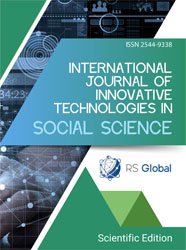NEUROIMMUNOLOGICAL MECHANISMS LINKING PRIMARY DYSMENORRHEA AND MIGRAINE: A SYSTEMATIC REVIEW OF THE LITERATURE
Abstract
Introduction and Purpose: Primary dysmenorrhea and migraine are among the most prevalent pain disorders in women of reproductive age, often coexisting and exhibiting overlapping pathophysiological mechanisms. This systematic review aims to identify and summarize the shared neuroimmunological pathways that may underlie both conditions, with particular emphasis on inflammatory mediators, neuropeptides, hormonal modulation, and glial activation.
Results: The analysis of studies published between 2000 and 2025 reveals consistent evidence of increased levels of proinflammatory cytokines (IL-1β, IL-6, TNF-α) and prostaglandins (especially PGE₂) in both disorders. These mediators contribute to peripheral and central sensitization, amplifying nociceptive signaling. Pain-related neuropeptides such as calcitonin gene-related peptide (CGRP) and substance P are involved in neurogenic inflammation, vascular dysregulation, and microglial activation within central pain pathways. Moreover, estrogen fluctuations appear to modulate both immune and neuronal responses, influencing microglial phenotype and cytokine release, thereby explaining the cyclic nature and female predominance of these conditions.
Conclusion: Dysmenorrhea and migraine share a common neuroimmune-endocrine framework, in which inflammatory mediators, neuropeptides, and hormonal fluctuations interact to enhance pain sensitivity. Recognition of these shared mechanisms provides a foundation for developing integrated therapeutic approaches targeting COX-2, CGRP, and microglial activation. Future translational research combining animal models with clinical data is essential to refine and personalize treatment strategies for both disorders.
References
Antonova, M., Wienecke, T., Olesen, J., & Ashina, M. (2012). Prostaglandin E2 induces immediate migraine-like attack in migraine patients without aura. Cephalalgia, 32(11), 822–833. https://doi.org/10.1177/0333102412451360
Barcikowska, Z., Rajkowska-Labon, E., Grzybowska, M. E., Hansdorfer-Korzon, R., & Zorena, K. (2020). Inflammatory Markers in Dysmenorrhea and Therapeutic Options. International Journal of Environmental Research and Public Health, 17(4), 1191. https://doi.org/10.3390/ijerph17041191
Chakraborty, B., Byemerwa, J., Krebs, T., Lim, F., Chang, C.-Y., & McDonnell, D. P. (2023). Estrogen Receptor Signaling in the Immune System. Endocrine Reviews, 44(1), 117–141. https://doi.org/10.1210/endrev/bnac017
Crona Guterstam, Y., Strunz, B., Ivarsson, M. A., Zimmer, C., Melin, A., Jonasson, A. F., Björkström, N. K., & Gidlöf, S. B. (2021). The cytokine profile of menstrual blood. Acta Obstetricia et Gynecologica Scandinavica, 100(2), 339–346. https://doi.org/10.1111/aogs.13990
Cutolo, M., Sulli, A., Seriolo, B., Accardo, S., & Masi, A. T. (1995). Estrogens, the immune response and autoimmunity. Clinical and Experimental Rheumatology, 13(2), 217–226.
Habib, P., & Beyer, C. (2015). Regulation of brain microglia by female gonadal steroids. The Journal of Steroid Biochemistry and Molecular Biology, 146, 3–14. https://doi.org/10.1016/j.jsbmb.2014.02.018
Itani, R., Soubra, L., Karout, S., Rahme, D., Karout, L., & Khojah, H. M. J. (2022). Primary Dysmenorrhea: Pathophysiology, Diagnosis, and Treatment Updates. Korean Journal of Family Medicine, 43(2), 101–108. https://doi.org/10.4082/kjfm.21.0103
Jellinck, P. H., Kaufmann, M., Gottfried-Blackmore, A., McEwen, B. S., Jones, G., & Bulloch, K. (2007). Selective conversion by microglia of dehydroepiandrosterone to 5-androstenediol-A steroid with inherent estrogenic properties. The Journal of Steroid Biochemistry and Molecular Biology, 107(3–5), 156–162. https://doi.org/10.1016/j.jsbmb.2007.04.004
Marjoribanks, J., Ayeleke, R. O., Farquhar, C., & Proctor, M. (2015). Nonsteroidal anti-inflammatory drugs for dysmenorrhoea. The Cochrane Database of Systematic Reviews, 2015(7), CD001751. https://doi.org/10.1002/14651858.CD001751.pub3
Martin, V. T. (2008). New theories in the pathogenesis of menstrual migraine. Current Pain and Headache Reports, 12(6), 453–462. https://doi.org/10.1007/s11916-008-0077-3
Musubire, A. K., Cheema, S., Ray, J. C., Hutton, E. J., & Matharu, M. (2023). Cytokines in primary headache disorders: A systematic review and meta-analysis. The Journal of Headache and Pain, 24(1), 36. https://doi.org/10.1186/s10194-023-01572-7
Pellesi, L., & Edvinsson, L. (2025). Revisiting substance P in migraine: A methodological approach inspired by anti-CGRP and anti-PACAP success. The Journal of Headache and Pain, 26(1), 22. https://doi.org/10.1186/s10194-025-01959-8
Russo, A. F. (2015). Calcitonin gene-related peptide (CGRP): A new target for migraine. Annual Review of Pharmacology and Toxicology, 55, 533–552. https://doi.org/10.1146/annurev-pharmtox-010814-124701
Sudershan, A., Younis, M., Sudershan, S., & Kumar, P. (2023). Migraine as an inflammatory disorder with microglial activation as a prime candidate. Neurological Research, 45(3), 200–215. https://doi.org/10.1080/01616412.2022.2129774
Sun, S., Fan, Z., Liu, X., Wang, L., & Ge, Z. (2024). Microglia TREM1-mediated neuroinflammation contributes to central sensitization via the NF-κB pathway in a chronic migraine model. The Journal of Headache and Pain, 25(1), 3. https://doi.org/10.1186/s10194-023-01707-w
Thuraiaiyah, J., Erritzøe-Jervild, M., Al-Khazali, H. M., Schytz, H. W., & Younis, S. (2022). The role of cytokines in migraine: A systematic review. Cephalalgia: An International Journal of Headache, 42(14), 1565–1588. https://doi.org/10.1177/03331024221118924
Xu, X., Cai, X., Liu, X., & Guo, S.-W. (2021). Possible involvement of neuropeptide and neurotransmitter receptors in Adenomyosis. Reproductive Biology and Endocrinology: RB&E, 19(1), 25. https://doi.org/10.1186/s12958-021-00711-6
Yu, W.-Y., Ma, L.-X., Zhang, Z., Mu, J.-D., Sun, T.-Y., Tian, Y., Qian, X., & Zhang, Y.-D. (2021). Acupuncture for Primary Dysmenorrhea: A Potential Mechanism from an Anti-Inflammatory Perspective. Evidence-based Complementary and Alternative Medicine : eCAM, 2021, 1907009. https://doi.org/10.1155/2021/1907009
Zyryanov, S. K., & Baybulatova, E. A. (2024). [Current challenges for therapy of comorbid patients: A new look at celecoxib. A review]. Terapevticheskii Arkhiv, 96(5), 531–542. https://doi.org/10.26442/00403660.2024.05.202769
Views:
138
Downloads:
91
Copyright (c) 2025 Karolina Wojdat-Krupa, Filip Lachowski, Karol Sikora, Julia Dolinkiewicz, Martyna Wasyluk, Anita Jalali

This work is licensed under a Creative Commons Attribution 4.0 International License.
All articles are published in open-access and licensed under a Creative Commons Attribution 4.0 International License (CC BY 4.0). Hence, authors retain copyright to the content of the articles.
CC BY 4.0 License allows content to be copied, adapted, displayed, distributed, re-published or otherwise re-used for any purpose including for adaptation and commercial use provided the content is attributed.











